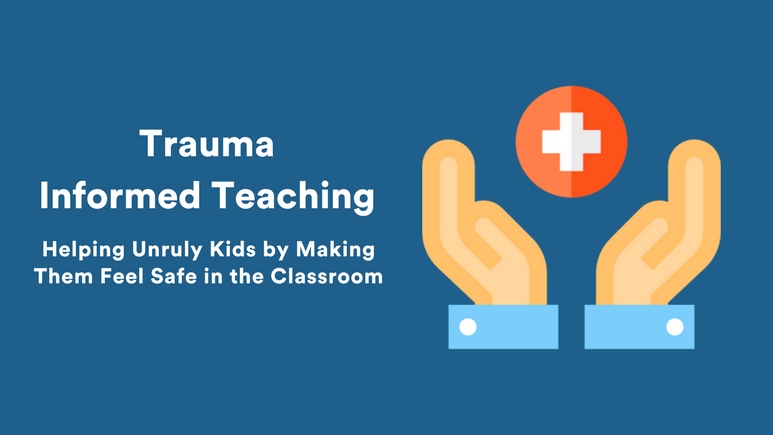
In a perfect world, every student would have two loving parents, a comfortable home in a safe neighborhood, and all their basic needs met.
Unfortunately, we don’t live in a perfect world.
While we may not like to think about it, many of our students encounter trauma of some sort.
Trauma may stem from poverty, violence, neglect, loss, or an unexpected experience.
And though an instance of trauma can be a one-time thing or persist for years, the impacts can be lasting.
Effects of Trauma on Behaviors
When an animal feels threatened, it goes into survival mode, doing whatever it needs to do to survive.
In a sense, humans act the same way.
If you see a car speeding towards you on the road, you impulsively move quickly to get out of the way.
Where there is some variability to this rule, though, is in what gets perceived as a threat.
Students who have experienced trauma in their childhood are much more likely to perceive and react to threats, even when none exists.
This is why everything from receiving a minor consequence to getting accidentally bumped by a peer can cause some students to overreact.
These perceived threats can quickly send some students into survival mode, which often manifests itself as misbehavior.
Yelling, fighting, avoiding work, or getting out of one’s seat may all be examples of a student in survival mode.
As teachers, we cannot change a child’s home life or what she has experienced.
We can, though, include trauma-informed practices in our teaching. A few subtle shifts can make a world of difference for many students.
Creating a Nurturing Class Environment
There are plenty of ways that teachers can build classroom environments and cultures that support students who’ve experienced trauma.
In general, try to keep interactions with students clear, consistent, and positive.
By being responsive to students’ needs and giving them choices about how they deal with their emotions, teachers can not only avoid behavior blowups but can also teach students valuable tools for dealing with their feelings outside the classroom as well.
Be Clear and Consistent
A good deal of misbehavior can be avoided with clear expectations and consistent enforcement of consequences.
If all students know exactly what behaviors are not permitted and exactly what will happen if they break a rule, there are less unexpected threats to perceive.
Just make sure you are implementing consequences for all students, not just the ones you’re expecting to misbehave.
Listen
This may be the most important thing a teacher can do to help students who’ve experienced trauma.
Often students don’t feel like they have a space to express their concerns. This in and of itself can switch a kid into survival mode.
Find time to hear student grievances. Don’t have time at the moment or have a student who’s reluctant to talk? See our next tip!
Encourage Writing
Having students write down what’s bothering them or why they’re upset is a great way to de-escalate a situation and help students process their feelings.
It can also be a productive way to provide support for a student who’s struggling.
Consider providing students with chronic misbehavior a journal. Get permission to read their entries and write them back questions and notes of encouragement.
Make Consequences Private
What could be more threatening than being scolded in front of the whole class?
For students who’ve experienced trauma, a public scolding often only makes things worse.
Instead, try to administer consequences and redirections one-on-one and in a non-threatening tone. Students are much likely to roll with the punches and get back on task.
Give Choices
Giving an upset student options is a great way to help him or her feel in control of a situation.
Let a student choose between finishing an assignment independently, or working with a partner.
Or give him the option to move to another seat for the rest of the class period.
These small concessions can make a big difference.
Have a Cool Down Corner
One great option to have for students is a cool down corner.
This is a place in your room where a student can go if he or she needs a moment away from the group.
This space might have books, markers, fidgets, or other simple toys to take the student’s mind off the current disturbance.
It’s also important to have a timer and clear expectations about how much time is appropriate to spend cooling down. Usually, 5 minutes is a good window.
Even implementing just a few of these ideas can be powerful ways create a safe and nurturing space that promotes learning for all students.
Have other ideas for helping students cope with the stresses of school? Please share in the comments below.



Leave a Reply